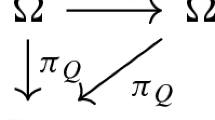Abstract
This paper provides an optimal mechanism for the introduction of temporal constraints into linear imaging formulations of the inverse electroencephalography problem. The method is based on derivation of a “virtual-SVD,” an extension of generalized singular value decomposition to the setting of random matrices. Surprisingly, the formalism is superior, in principle, to standard regularization methods even in the absence of known temporal constraints. Investigation of this basic temporally unconstrained setting was undertaken to illustrate the application of the method, and as a necessary first step in its systematic evaluation. Although abstract simulations demonstrate superior accuracy for the virtual-SVD method as compared with standard methods, investigation of a particular realistic simulation involving spatiotemporally distributed temporal lobe interictal spikes indicates that significant improvement in solution estimate quality under temporally unconstrained conditions may be limited to a very narrow range of the signal-to-noise ratio (particularly in the context of a markedly row-deficient transfer matrix). These results underline the prospective importance of investigation of the efficacy and feasibility of application of temporal constraints (such as those resulting from knowledge of the general time series format of epilepsy associated wave forms, evoked potentials, etc.) within the derived formalism. © 2000 Biomedical Engineering Society.
PAC00: 8719Nn, 8780Tq
Similar content being viewed by others
REFERENCES
Brooks D. H., G. M. Maratos, G. Ahmad, and R. S. MacLeod. The augmented problem of electrocardiography: Combined time and space regularization. In: Proceedings of the 15th annual international conference of the IEEE Engineering in Medicine and Biology Society, Piscataway, NJ. New York: IEEE, 1993, pp. 773–774.
Colli-Franzone, P., L. Guerri, S. Tentoni, C. Viganotti, S. Baruffi, S. Spaggiari, and B. Taccardi. A mathematical procedure for solving the inverse potential problem of electrocardiography. Analysis of the time-space accuracy from in vitro experimental data. Math. Biosci. 77:353–396, 1985.
Cox J. Surgical treatment of cardiac arrhythmias. In: The Heart, edited by R. Schlant and R. Alexander; 8th ed. New York: McGraw Hill, 1994, pp. 863–871.
Dale, A. M. and M. I. Sereno. Improved localization of cortical activity by combining EEG and MEG with MRI cortical surface reconstruction: a linear approach. J. Cognitive Neuroscience 5:162–176, 1993.
Foster, M. An application of the Wiener-Kolmogorov smoothing theory to matrix inversion. J. SIAM 9:387–392, 1961.
Greensite, F. Second-order approximation of the pseudoinverse for operator deconvolutions and families of ill-posed problems. SIAM (Soc. Ind. Appl. Math. ) J. Appl. Math. 59:1–16, 1998.
Greensite, F. and G. Huiskamp. An improved method for estimating epicardial potentials from the body surface. IEEE Trans. Biomed. Eng. 45:1–7, 1998.
Greensite, F. Myocardial activation imaging. In: Computational Inverse Problems in Electrocardiography, edited by Peter Johnston, Southampton. UK: WIT (in press).
Groetsch, C. Inverse Problems in the Mathematical Sciences. Braunschweig, Germany: Viewig, 1993.
Gulrajani, R. M., F. A. Roberge, G. E. Mailloux. The forward problem of electrocardiography. In: Comprehensive Electrocardiology, edited by P. W. Macfarlane and T. T. Veitch Lawrie. Oxford: Pergamon, 1989, pp. 197–236.
Gulrajani, R. M., F. A. Roberge, and P. Savard. The inverse problem of electrocardiography. In: Comprehensive Electrocardiology, edited by P. W. Macfarlane and T. T. Veitch Lawrie. Oxford: Pergamon, 1989, pp. 237–288.
Oostendorp T., and Delbeke J. The conductivity of the human skull in vivo and in vitro. In: Proceedings of the 21st annul international conference of the IEEE Engineering in Medicine and Biology Society, Piscataway NJ. New York: IEEE. 1999, p. 456.
Oster, H. and Y. Rudy. The use of temporal information in the regularization of the inverse problem of electrocardiography. IEEE Trans. Biomed. Eng. 39:65–75, 1992.
Plonsey, R. Bioelectric Phenomena. New York: McGraw-Hill, 1969.
Van Loan, C. Generalizing the singular value decomposition. SIAM (Soc. Ind. Appl. Math. ) J. Numer. Anal. 13:76–83, 1976.
Wyler A. R. Diagnostic operative techniques in the treatment of epilepsy: grids and strip electrodes. In: Operative Neurosurgical Techniques, 3rd ed. edited by H. H. Schmidek and W. H. Sweet, Philadelphia: W. B. Saunders, 1995, Vol. 2, pp. 1265–1270.
Author information
Authors and Affiliations
Rights and permissions
About this article
Cite this article
Greensite, F., Huiskamp, G. Temporally Unconstrained Space-time Treatment of Linear Formulations of the Inverse Problem of Electroencephalography. Annals of Biomedical Engineering 28, 1253–1268 (2000). https://doi.org/10.1114/1.1317530
Issue Date:
DOI: https://doi.org/10.1114/1.1317530




